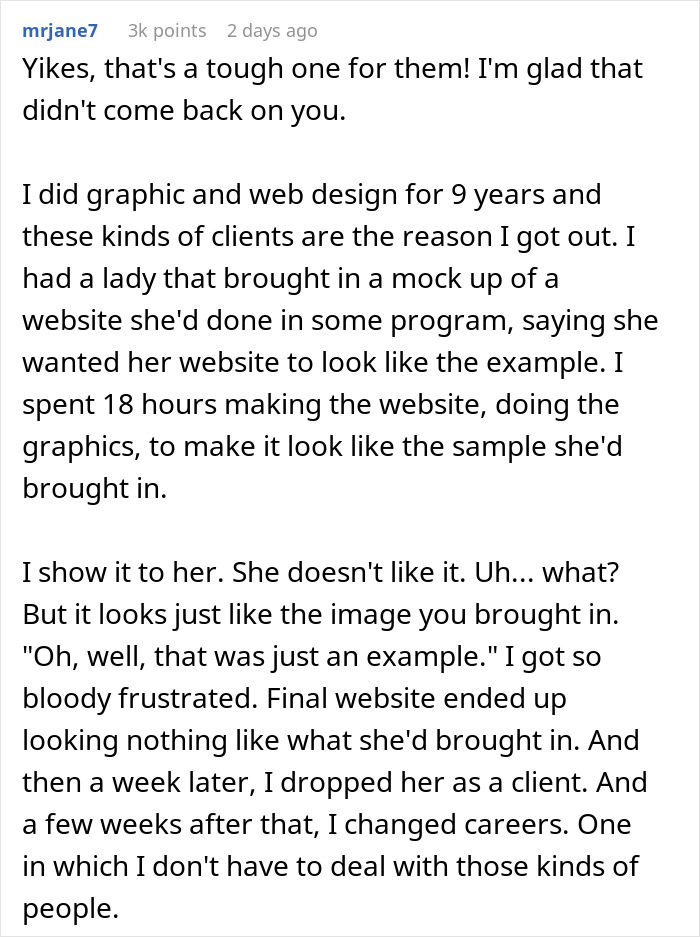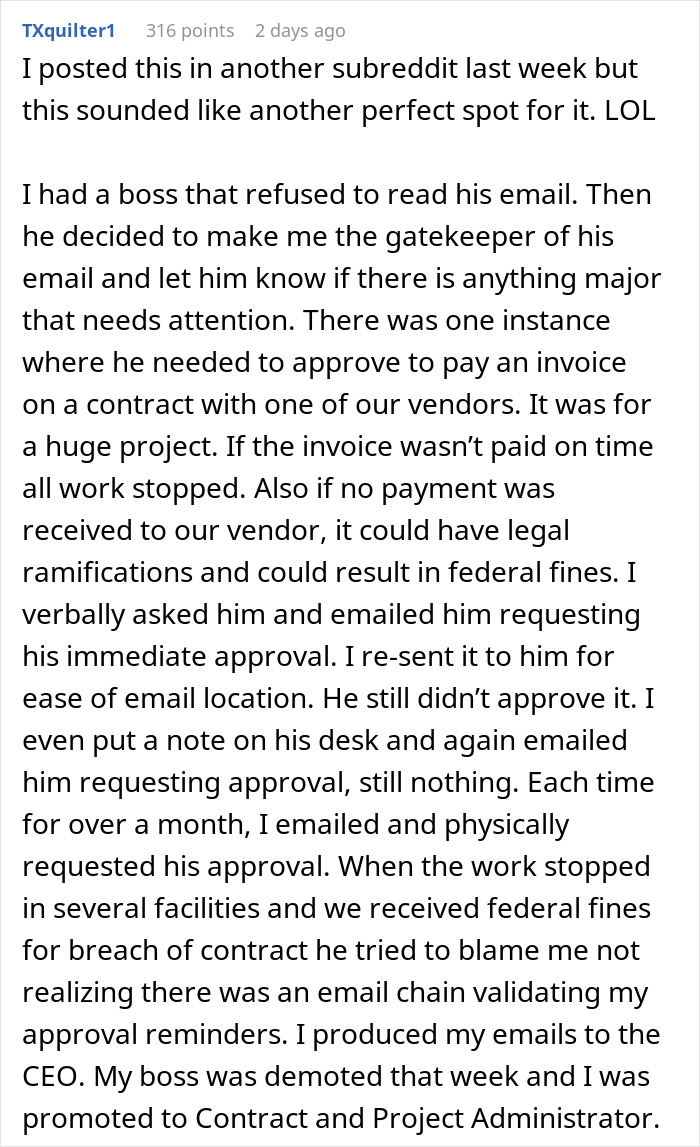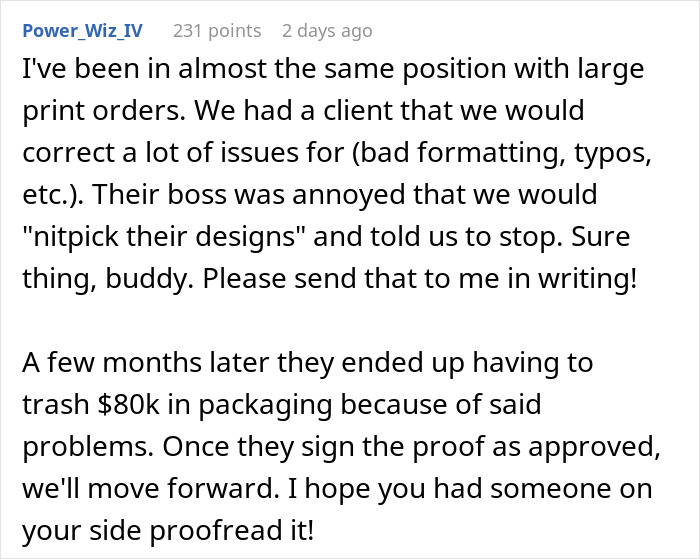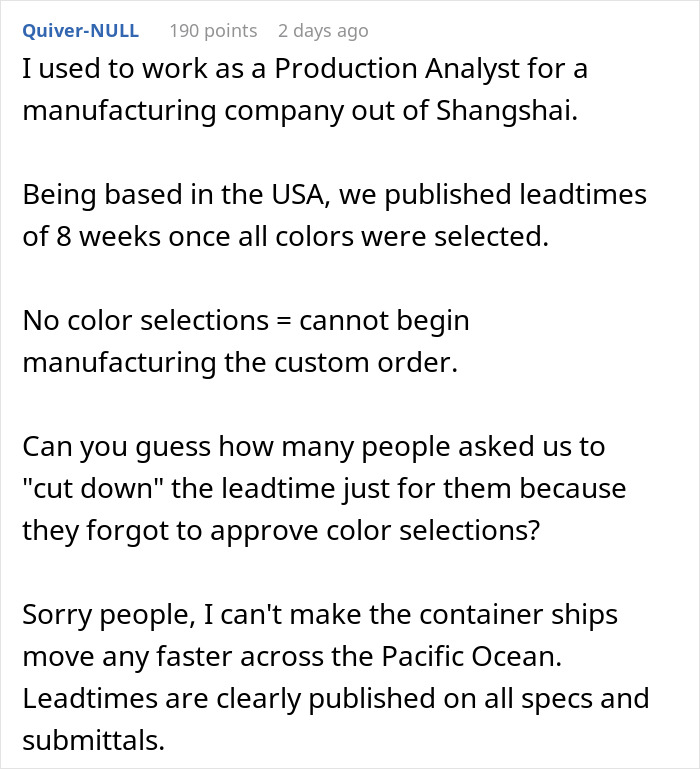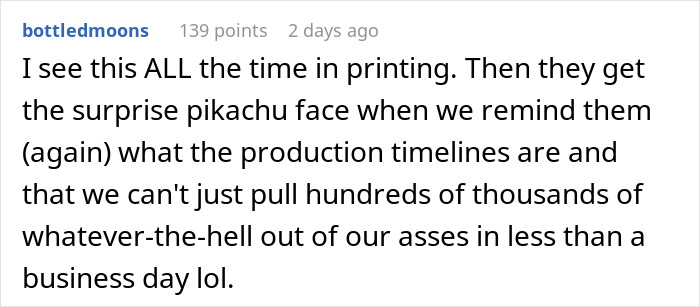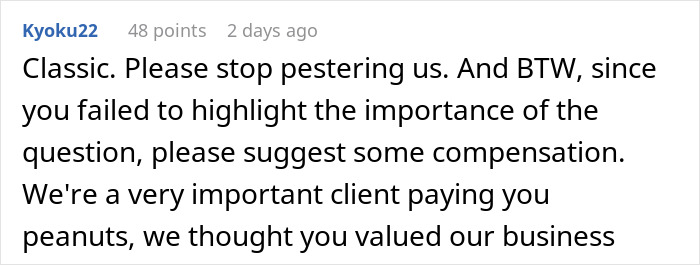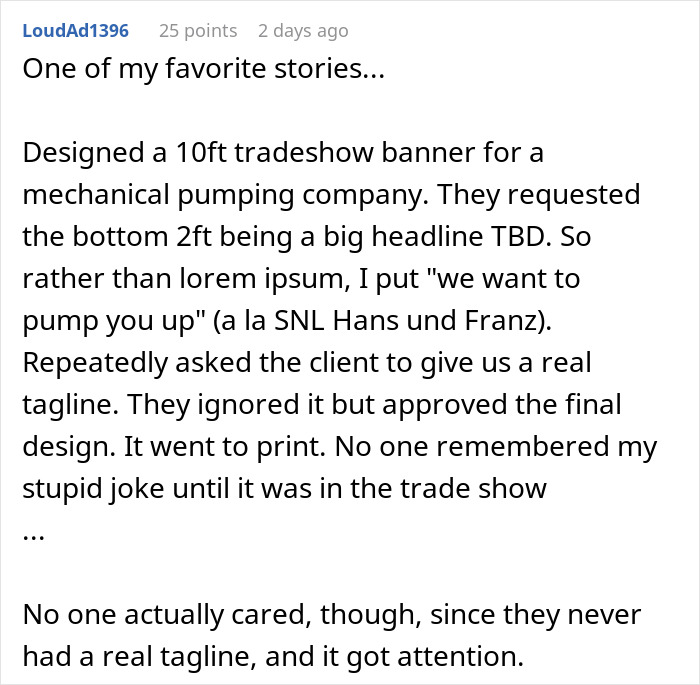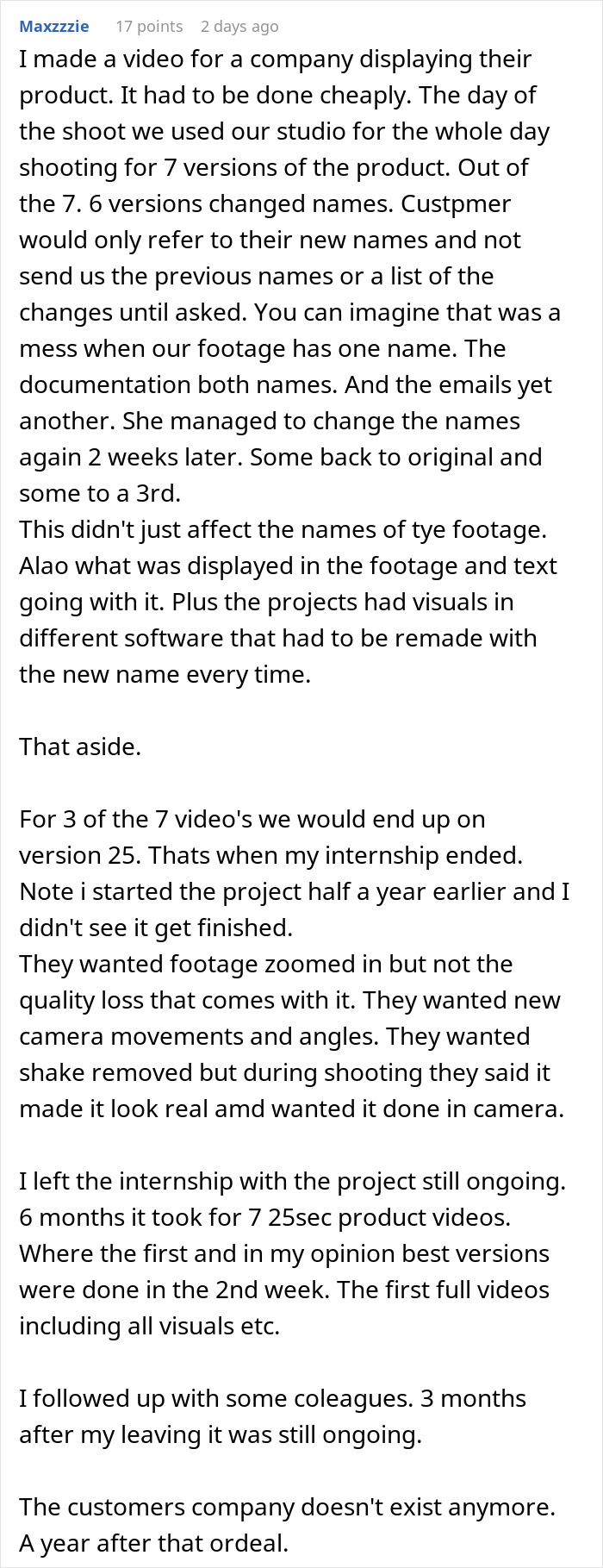If you work in graphic design, you’re probably used to taking feedback from clients. If you’re competent and the client knows what they want, you can avoid much back and forth, but things can get frustrating if the client is slack or muddy with their responses.
One graphic designer who was just trying to get feedback on time was annoyed when the client’s project lead told them to stop “pestering” them about updates. So, they maliciously complied. That’s when things got interesting.
More info: Reddit
Being a professional creative can get frustrating, as this graphic designer was finding out the hard way

Image credits: Sebastian Herrmann / Unsplash (not the actual photo)
Trying to avoid missing deadlines, the graphic designer sent regular requests for feedback from their client
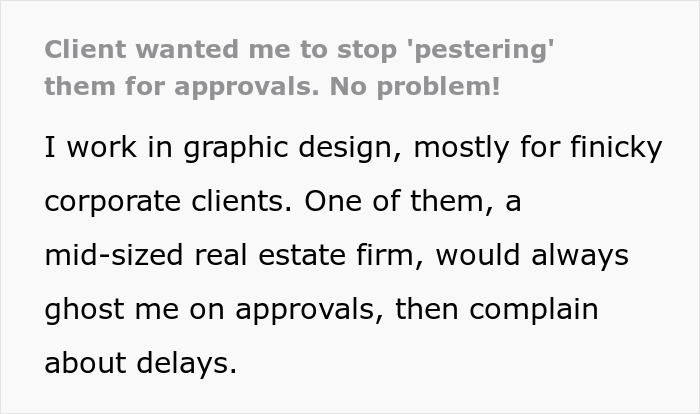
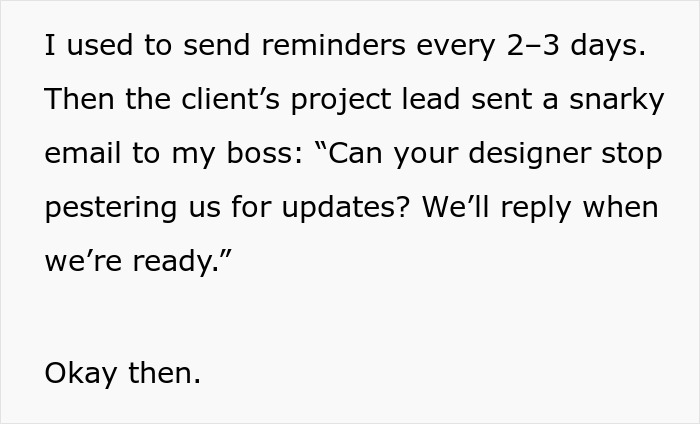

Image credits: pixel-shot.com / Freepik (not the actual photo)
They were especially annoyed when the client’s project lead sent their boss a mail asking them to stop “pestering” them about updates

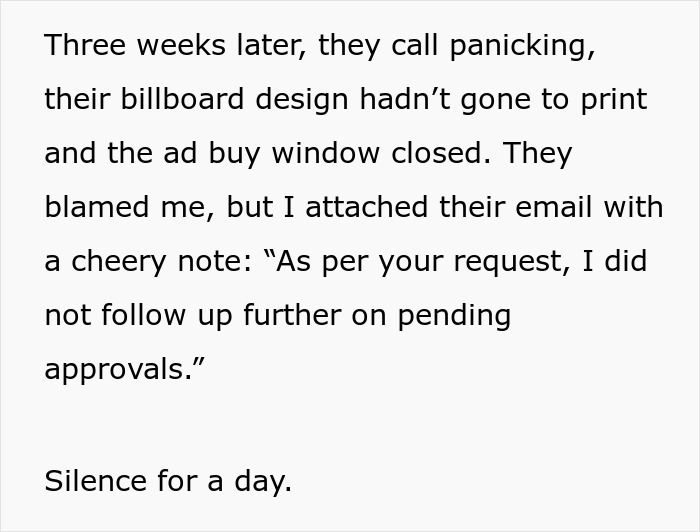

Image credits: katemangostar / Freepik (not the actual photo)
That’s when the graphic designer decided to maliciously comply and stop sending follow-up requests altogether
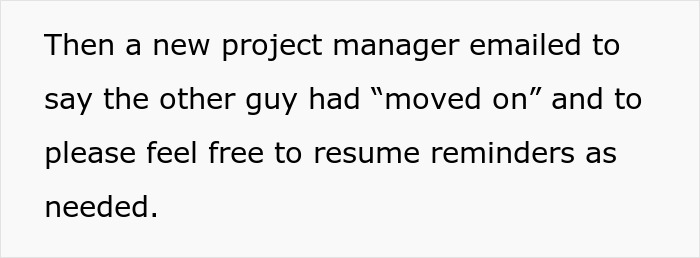

Image credits: Ill-Statistician-965
In the end, the client missed their deadline, the project lead was forced to find another job, and the graphic designer had the last laugh
Working with corporate clients often means being caught between professionalism and passive aggression. OP shared how a real estate company would ghost them on approvals, then complain when deadlines slipped. To help, they sent reminders every few days. That is until the client’s project lead sent a snarky email to their boss asking them to stop “pestering.”
Taking the email to heart, OP flagged it, marked the project as “on hold,” and stopped following up altogether. After all, they were just respecting the client’s explicit request. Weeks ticked by in silence. No one asked questions. No one gave approvals. The designer waited patiently, confident that corporate karma was quietly at work.
Three weeks later, the panic call came in. The real estate client missed the ad buy window for a huge billboard campaign. They tried to pin the blame on OP, but the response was simple and satisfying. Attached was their own snarky email with a cheerful note: “As per your request, I did not follow up.”
The silence that followed was almost musical. A full day passed before a new manager emailed to say the previous guy had “moved on.” Suddenly, reminders were not only welcome, they were encouraged. OP resumed their routine but now makes sure to CC both the new manager and the legal department on every update.

Image credits: tsyhun / Freepik (not the actual photo)
From what OP tells us in their post, their efforts to be professional were unceremoniously brushed off by the client. Fortunately, they avoided taking the blame, but what should employers know about malicious compliance? We went looking for answers.
According to the BambooHR website, malicious compliance is when a worker follows a company’s rules to the tee but undermines the intended purpose. This devious workplace behavior may seem like a minor annoyance, but some acts can have serious repercussions for the company.
Potential impacts include productivity loss, employee turnover, reputation damage, lowered morale, missed deadlines, customer complaints, union involvement, fines and penalties, and even legal action. Company culture can also take a hit.
According to the Keka website, malicious compliance isn’t about breaking the rules; it’s about following them too well. And that usually happens when employees feel unheard, micromanaged, or stuck with policies that are unjust and don’t really make sense.
Companies can minimize the risk of malicious compliance by fixing the loopholes and nonsense rules, actually listening to their employees, speaking with employees who have engaged in malicious compliance, building a culture of trust, and rewarding smart thinking, not just rule-following.
Fortunately, OP’s malicious compliance didn’t cost them or their boss anything and the client’s project lead got exactly what he deserved. Maybe the new one will be on-board with timely updates and more useful feedback.
Bored Panda caught up with award-winning heavyweight designer and art director, Natalie Vella, to find out what annoys creatives the most when it comes to difficult clients.
“Over time I have a built a great network and have grown really good relationships along the way – which makes all the difference. That said, some of the things I am sure most designers have faced that can make things less than ideal include incomplete briefs. Most of the time, if all the information needed for the job was there upfront it would save about half the time, ” says Vella.
Vella says that many briefs come as a one liner, without context, information and elements needed to do the job.
She adds, “Lack of knowledge about what they need and are asking for, and then not trusting the experience you bring can be very frustrating for both sides. Bargaining down rates that are industry and experience related. Unconsolidated feedback, especially when there are multiple decision-makers that aren’t on the same page. It causes confusion and slows everything down.”
“At the end of the day it’s all about communication – from the client to the designer, the design to the consumer.” concluded Vella.
What would you have done if you’d found yourself in OP’s shoes? Do you think their client will make the same mistake twice? Let us know your opinion in the comments!
In the comments, some readers shared their own horror stories of working with difficult clients
